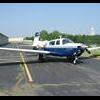Engine Analyzers
-
Members Online
- Lax291
- Txcowboy
- Matthew P
- EricShr
- PT20J
- hammdo
- 201Mooniac
- AndreiC
- jcavazos
- TCC
- LANCECASPER
- EricJ
- Parker_Woodruff
- BillyT0020
- MikeOH
- takair
- toto
- Shadrach
- Grant_Waite
- Crawfish
- 201er
- JeffPug
- Larry
- 0TreeLemur
- Andy95W
- kortopates
- eman1200
- davevalenti
- midlifeflyer
- redbaron1982
- Greg Ellis
- Utah20Gflyer
- 1980Mooney
- ericrynehess
- Skates97
- Schllc
- ArrowBerry
- Rmnpilot
- KLRDMD
- Garrett Schutz - Chef


Recommended Posts
Join the conversation
You can post now and register later. If you have an account, sign in now to post with your account.